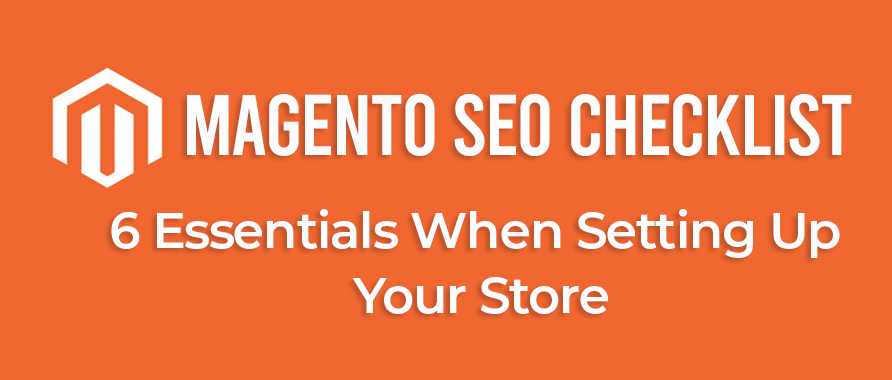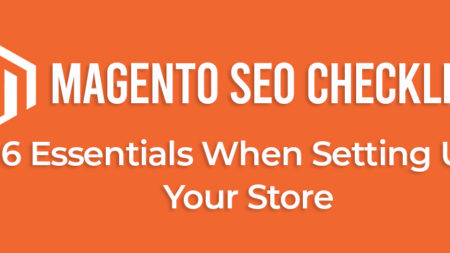Magento is one of the most famous e-commerce platforms. It ranked second in the most utilized e-commerce platform worldwide.
Magento also has many customizable features which let its users create their online store the way they want to.
However, all these customizable features can make the creation of your online store a bit confusing. Hence, you need some help to make the most out of Magento.
Things You Need to do to Set up your Store: Magento SEO Checklist
The procedure of what you need to do in Magento to create your online store are given below:
1. An SEO-Friendly URL Structure
All the URLs on your website needs to be unique, easy to read, and mainly SEO friendly.
You should not let Magento build the URL for you. This is because these URLs will not be very efficient. You have to check all the URLs and make sure that they are short, precise and easy to understand.
You have to keep in mind that people need to type these in the browse. Hence it must be short and easy to remember. A long and complex URL will make it hard for people to remember and in the process will not be able to reach your page.
Even though the URLs have nothing to do with the ranking of the website, they do affect the user experience. And if you do not provide good user experience, it might affect your ranking of the website.
If you use these URLs for your site, it will be beneficial for you:
- /category/ for the category pages.
- /category/sub-category/ for your subcategory pages.
- category-sub-category/product-name/ for your product pages.
To achieve it in Magento 2, you need to follow the given steps:
- Go to Stores >> Configuration > General > Web.
- Open the Search Engine Optimization tab. Then click yes to select Use web server rewrites and then click on Save Config.
You can follow a second setting method to make your URL more efficient
- Go to the Stores > Configuration > Catalog > Search Engine Optimization.
- Next, you have to change the upcoming options to Yes:
- Use Categories Path for Product.
- Create Permanent Redirect for URLs if URL Key Changed.
- Use Canonical Link Meta Tag for Product.
2. Apply Titles and Meta Description on all your Categories and Product Pages
Adding titles and meta descriptions is an important rule for SEO. Most of the people make the mistake of not following this rule. Magento, like any other platform, writes the description for you by default.
However, if you allow it to do this, you will be losing the opportunity of putting the keywords in the description. By putting the keywords in your description, you will make your webpage stand out from your competition.
If a platform creates your description, they generally take the first few sentences from your webpage to use as the description.
You should avoid giving a description of the manufacturer. The reason behind this is that you need to have a unique description on your page, rather than the same description like on other web pages. You should write a unique description explaining the content of your web page.
To add new description, follow this given step: Content > Configuration > Design > HTML Head > Default Description
3. Make your Product Image more Efficient
If you make your product image more efficient, it will be great for SEO. As the search engines are unable to read images, you have to apply alt tags. Otherwise, you will miss out on an opportunity to put an extra keyword on your website.
Naming your images with keyword like “red-shirt.jpg” rather than with names like “product1.jpg” will be very useful. Moreover, these jpg files are more preferred over the use of png files, because jpg files are smaller and don’t affect the speed of your website.
To optimize the alt text on your images, follow the steps:
- Open the Product option.
- Then select Catalog option.
- In the Configurable Products double click on thumbnail.
- Then go to the details page.
- In the details page, scroll down to the images and videos.
- Double click on images.
- Then put alt text in the given field.
4. Be Sure to Use H2 and H3 Tags
If you haven’t used any tags, Magento will by default make all of your page titles to H1 tags, which is not good for SEO. H1 tags should only be used for the name of the products and category titles.
The headings, which are of less importance should be done in H2 and H3 tags.
The hierarchy from H1- H3 tags should be clear. Otherwise, the search engine will not be able to correctly index your pages.
This correct using of the H1, H2, and H3 makes a great effect on the SEO. It is also very important to see that you use the keywords in your headings and sub-headings. However, you should avoid doing keyword stuffing.
5. Try to Include Blogs in your Websites
Now adding a blog on your website has become very easy with the help of Magento. To add a blog, you just have to add the extension of the blog, and it will be done.
A consistent blog is a good way of including keywords which will improve the ranking of your website. This will also help the word to spread about your products and brand.
By sharing your blogs on your social media you can gain the attention of others, who in turn can share it with other people. This will help your product’s information to spread among a large customer base.
You can also interact with them to convince them of your product. You can input some amount of creativity on your posts, as not all posts have to be in text format.
Also apply images, infographics, live videos, Q and As and many other things.
You need to draw the attention of your users, make them interact with you. Your main motive should be to impress them, and in return, they may consider buying your product.
6. Optimize the Speed of your Site
One of Magento’s problems is its speed.
Users will not wait for your site to load. Google also give importance to those sites having a good loading speed over those having a low loading speed. So make sure that your site gives a good loading speed.
You can apply caching. This will enable the users to store a version of your site on their computer and when they want to access it, they don’t have to open it from the beginning.
It is best if you merge your JavaScript and CSS files. Magento do this by default for most of the JavaScript files, however, it does not do the same for the CSS. So for the CSS, you have to do it yourself.
By merging these two file types, you will see a huge boost in your loading time as well as your pages’ speed.
Conclusion
So these are the essential steps to follow when you are opening an online store. By following these steps, you will see a huge number of customers in your websites.

